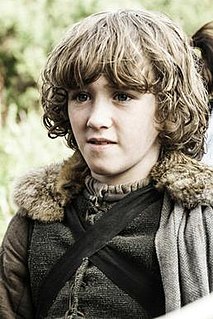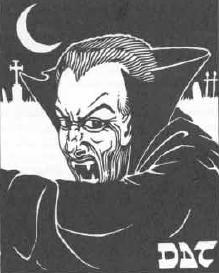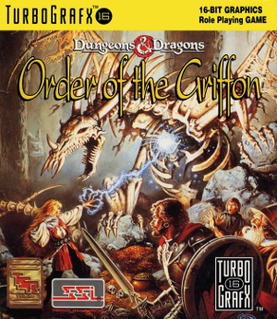
Ravenloft is a campaign setting for the Dungeons & Dragons roleplaying game. It is an alternate time-space existence known as a pocket dimension or demiplane, called the Demiplane of Dread, which consists of a collection of land pieces called "domains", brought together by a mysterious force known only as the Dark Powers. Each domain is tailored to and mystically ruled by a being called a Darklord who is forever trapped and surrounded by magical mists surrounding the domain. Strahd von Zarovich, a vampire in the original AD&DRavenloft I6 module 1983, became the first Darklord, both ruler and prisoner of his own personal domain of Barovia. How Count von Zarovich became the darklord of Barovia was detailed in the novel, I, Strahd: The Memoirs of a Vampire. As originally established in the Ravenloft: Realm of Terror boxed set known as "the Black Box" released in 1990, The Ravenloft campaign setting was located in the Ethereal Plane. As a physical manifestation of that plane, lands, monsters and even people were created out of the mysterious mists, and the realm acted as a prison where one could enter or be transported, but means of escape were few. Other Ravenloft Domains and Darklords were eventually added in various AD&D 2nd edition products establishing a core continent attached around Barovia which could be traveled to by others if their respective lords allowed entering or leaving their borders; while some Domains remained isolated in the mists and were referred to as Islands.
An adventure is an exciting experience that is typically bold, sometimes risky, undertaking.

Rickon Stark is a fictional character in the A Song of Ice and Fire series of fantasy novels by American author George R. R. Martin, and its television adaptation Game of Thrones. Introduced in 1996's A Game of Thrones, Rickon is the youngest child of Eddard Stark, the honorable lord of Winterfell, an ancient fortress in the North of the fictional kingdom of Westeros. He subsequently appeared in Martin's A Clash of Kings (1998). Rickon is portrayed by Irish actor Art Parkinson in the HBO television adaptation.
Dungeons & Dragons is a fantasy role-playing game.
A werewolf, in folklore, is a person who changes into a wolf.

Trolls are fictional monsters in the Dungeons & Dragons roleplaying game.
The Dungeons & Dragons Basic Game is an introductory version of Dungeons & Dragons (D&D) role-playing game packaged in the form of a board game. The original game was released in 2004 by Wizards of the Coast and was designed by Jonathan Tweet, one of the D&D 3rd edition designers. A new version of this game was released in September 2006.
The Arms and Equipment Guide is the name of two supplementary rule books for the Dungeons & Dragons fantasy role-playing game. Each describes various equipment that can be used in a campaign.

In the Dungeons & Dragons fantasy role-playing game, a vampire is an undead creature. A humanoid or monstrous humanoid creature can become a vampire, and looks as it did in life, with pale skin, haunting red eyes, and a feral cast to its features. A new vampire is created when another vampire drains the life out of a living creature. Its depiction is related to those in 1930s and 1940s Hollywood Dracula and monster movies. In writing vampires into the game, as with other creatures arising in folklore, the authors had to consider what elements arising in more recent popular culture should be incorporated into their description and characteristics.
Beelzebub was the name of a deity worshipped in the Philistine city of Ekron.

Order of the Griffon is a tactical role-playing game for the TurboGrafx-16 developed by Westwood Associates and based on the tabletop role-playing game Dungeons & Dragons (D&D). The game is set in the nation of Karameikos within D&D's Mystara setting.
A necromancer is a person who practices necromancy, a discipline of black magic used to communicate with the dead to foretell the future.

Races of Stone is an optional sourcebook for the 3.5 edition of the Dungeons & Dragons fantasy role-playing game.
Dungeons & Dragons (D&D) is a fantasy role-playing game first published in 1974. As the popularity of the game grew throughout the late-1970s and 1980s, it became referenced in popular culture more frequently. The complement of games, films and cultural references based on Dungeons & Dragons or similar fantasies, characters, and adventures became ubiquitous after the end of the 1970s.
John D. Rateliff is an author of roleplaying games and an independent scholar, specializing in the Inklings, especially Tolkien studies.

Dungeons & Dragons is a comic book series that was published by IDW Publishing, originally based on the 4th Edition core setting of the Dungeons & Dragons fantasy role-playing game. Since 2010, under the license from Hasbro and Wizards of the Coast, IDW Publishing has released two Dungeons & Dragons ongoing series, eleven Dungeons & Dragons limited series, three crossover series and an annual. Since 2014, the comics have been tied to the 5th Edition core setting.
"Dire Wolf" is a ballad by the Grateful Dead, released as the third track on their 1970 album Workingman's Dead. The lyrics were written by Robert Hunter after watching a film adaptation of The Hound of the Baskervilles. The music, containing elements of country and folk music, was composed by Jerry Garcia on the same day. The song tells the story of a man who plays cards with a "dire wolf" on a cold winter's night in "Fennario"; the lyrics have been variously interpreted. The piece became a staple of the Grateful Dead's performances, and was played more than two hundred times between 1969 and 1995.
This page is based on this
Wikipedia article Text is available under the
CC BY-SA 4.0 license; additional terms may apply.
Images, videos and audio are available under their respective licenses.




